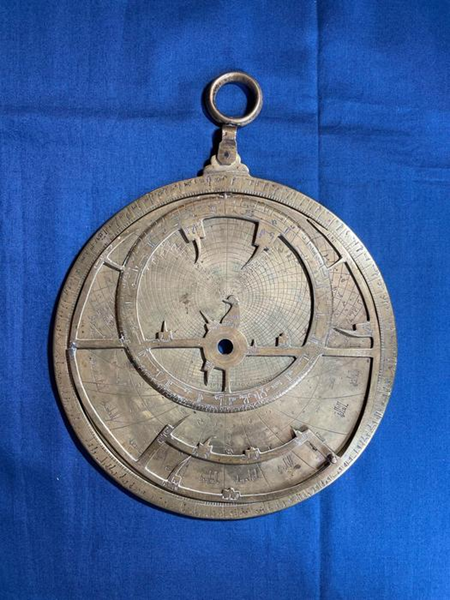[ad_1]
Hello Nature readers, would you like to get this Briefing in your inbox free every day? Sign up here.

Woolly mammoths’ closest living relatives are Asian elephants, which could be genetically engineered to have mammoth-like traits.Credit: Mark Garlick/Science Photo Library via Alamy
The US company Colossal Biosciences says it has put elephant skin cells into an embryonic state — the first to do so. This is an early technical step in their bid to breed Asian elephants (Elephus maximus) that have traits of extinct woolly mammoths (Mammuthus primigenius), such as shaggy hair. There are many more reproductive hurdles to clear: from making viable ‘synthetic’ embryos to creating artificial wombs for in vitro gestation. “I just don’t know the time frame and whether it’s worth the resources,” says evolutionary geneticist Vincent Lynch. He plans to attempt the Colossal method as part of his lab’s ongoing efforts to understand why elephants rarely get cancer.
Preprint: bioRxiv preprint (not peer reviewed)
A landmark study of more than 200 people undergoing surgery found that nearly 60% had microplastics in fatty plaques lining their arteries. Those who did were 4.5 times more likely to experience a heart attack, stroke or death in the 3 years after their surgery than those whose arteries were plastic-free. The study comes at a pivotal moment for a global treaty to eliminate plastic pollution, first proposed in 2022, and intended to be finalized by the end of 2024. “This will be the launching pad for further studies across the world to corroborate, extend and delve into the degree of the risk that micro- and nanoplastics pose,” says physician-scientist Robert Brook.
Reference: New England Journal Medicine paper
The two likely candidates for the November US Presidential elections — Donald Trump and Joe Biden — have opposing views on many issues. Nature talks to researchers and policy analysts about three key areas for science:
• Trump could disrupt the climate agenda laid out by Biden by reversing pledges to slash emissions and by blocking funding for clean energy projects.
• The candidates differ in their support for abortion rights, vaccinations and key federal and international health agencies.
• China relations are one area where the two candidates are more aligned: scientific cooperation between the US and China has continued to decline under Biden and this is unlikely to change.
An 11th-century astrolabe bears Arabic, Latin and Hebrew words and numerals inscribed by different users who added translations and corrections to the instrument. “It’s a powerful record of scientific exchange between Arabs, Jews and Christians over hundreds of years,” says Federica Gigante, a specialist in Islamic scientific instruments who spotted it in the collection of a museum in Italy.
Reference: Nuncius paper

Federica Gigante
“In 11th-century Spain, Jews and Muslims and Christians were working alongside each other, especially in the scientific media,” says Gigante. “All this is known, but what I find extraordinary is that this is a very tangible, physical proof of that history.”
Features & opinion
Preliminary analysis of almost 5,000 papers submitted to Nature over a five-month period reveals that too few are submitted by women in the role of leading or ‘corresponding’ author. Of the 90% of corresponding authors who were willing to disclose their gender to Nature, just 17% identified as women — globally, the female scientific workforce was around 32% in 2021, according to UNESCO data. There was also a notable difference in acceptance rates. “We cannot assume that peer review is a gender-blind process,” comments a Nature editorial, vowing to double down on efforts to reach more women: proactively seeking out women authors and reviewers, and challenging stereotypes about gender and publishing. The data will be further analysed and updated, the article adds.
In 1939, concerned by the pace at which nuclear-science discoveries were being made in Germany, physicist Leo Szilard persuaded Albert Einstein to write to US president Franklin D. Roosevelt, warning him of the risk of an atomic bomb in Adolf Hitler’s hands. But Szilard wasn’t the only physicist to try to use Einstein’s prestige to alert the president, writes mathematician Karl Sigmund: physicist Hans Thirring independently arrived at the same idea. “Thirring’s attempt petered out, but deserves a footnote in history, if only because it involves none less than Kurt Gödel in the unexpected role of a secret agent,” writes Sigmund.
Offshore energy platforms must all, eventually, be decommissioned. Whether these huge structures are abandoned, toppled, removed or repurposed, science — not just politics — must play a part in decision-making, argue four marine scientists. Many “consider anything other than the complete removal of these structures to be littering by energy companies”, they write. But a ‘rigs-to-reefs’ approach can provide habitats for marine life, with far less pollution and cost, if the location is suitable. The authors call for regulators to keep an open mind about alternative decommissioning methods like reefing and recommend that future marine infrastructure should be designed with decommissioning in mind.
[ad_2]
Source Article Link

